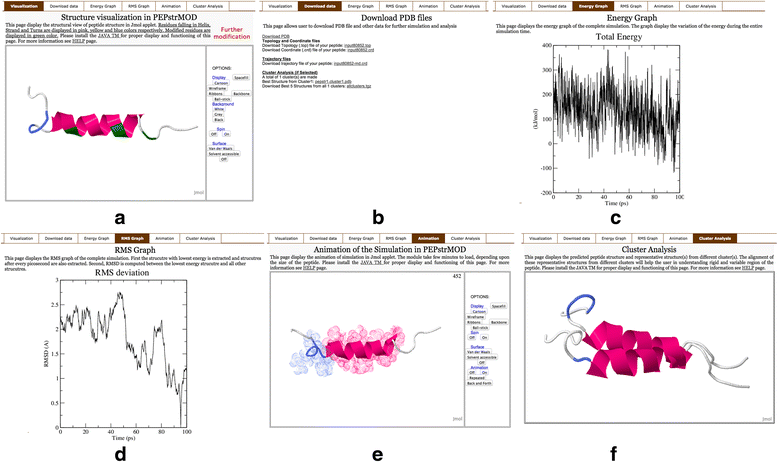PEPstrMOD: structure prediction of peptides containing natural, non-natural and modified residues
- PMID: 26690490
- PMCID: PMC4687368
- DOI: 10.1186/s13062-015-0103-4
PEPstrMOD: structure prediction of peptides containing natural, non-natural and modified residues
Abstract
Background: In the past, many methods have been developed for peptide tertiary structure prediction but they are limited to peptides having natural amino acids. This study describes a method PEPstrMOD, which is an updated version of PEPstr, developed specifically for predicting the structure of peptides containing natural and non-natural/modified residues.
Results: PEPstrMOD integrates Forcefield_NCAA and Forcefield_PTM force field libraries to handle 147 non-natural residues and 32 types of post-translational modifications respectively by performing molecular dynamics using AMBER. AMBER was also used to handle other modifications like peptide cyclization, use of D-amino acids and capping of terminal residues. In addition, GROMACS was used to implement 210 non-natural side-chains in peptides using SwissSideChain force field library. We evaluated the performance of PEPstrMOD on three datasets generated from Protein Data Bank; i) ModPep dataset contains 501 non-natural peptides, ii) ModPep16, a subset of ModPep, and iii) CyclicPep contains 34 cyclic peptides. We achieved backbone Root Mean Square Deviation between the actual and predicted structure of peptides in the range of 3.81-4.05 Å.
Conclusions: In summary, the method PEPstrMOD has been developed that predicts the structure of modified peptide from the sequence/structure given as input. We validated the PEPstrMOD application using a dataset of peptides having non-natural/modified residues. PEPstrMOD offers unique advantages that allow the users to predict the structures of peptides having i) natural residues, ii) non-naturally modified residues, iii) terminal modifications, iv) post-translational modifications, v) D-amino acids, and also allows extended simulation of predicted peptides. This will help the researchers to have prior structural information of modified peptides to further design the peptides for desired therapeutic property. PEPstrMOD is freely available at http://osddlinux.osdd.net/raghava/pepstrmod/.
Figures



References
-
- Otvos L. Peptide-Based Drug Design Methods and Protocols. vol 494. Humana Press; 2008. doi:10.1007/978-1-59745-419-3. - PubMed
Publication types
MeSH terms
Substances
LinkOut - more resources
Full Text Sources
Other Literature Sources
Miscellaneous

